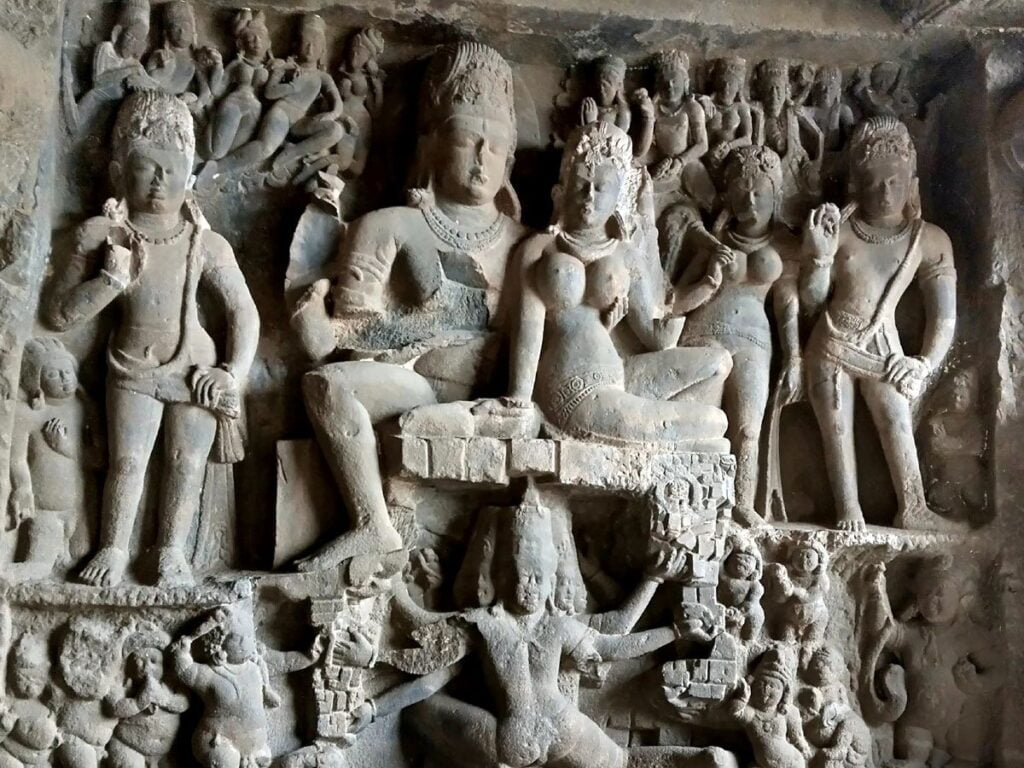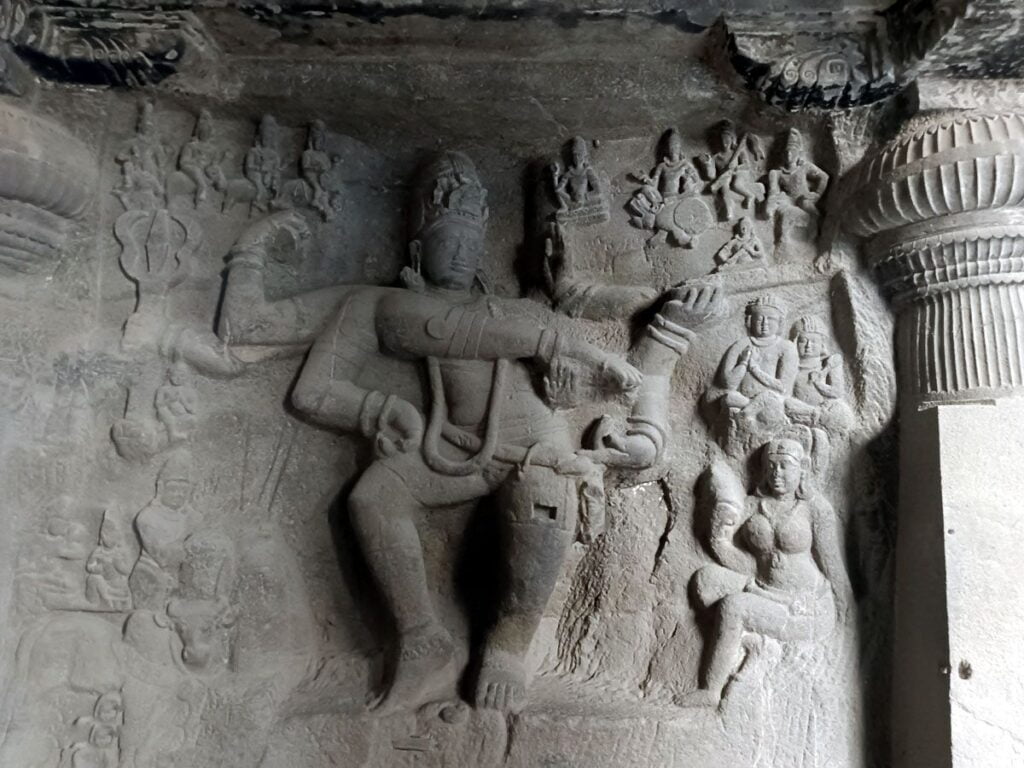Oldest Religion in the World
The quest to identify the oldest religion in the world is a journey through the annals of human history, tracing the footsteps of ancient civilizations and their spiritual beliefs. In the tapestry of time, certain religions have withstood the test, enduring millennia and leaving an indelible mark on the cultural, social, and philosophical fabric of humanity. This comprehensive exploration delves into the origins, evolution, and enduring legacy of the oldest religion in the world.

Contents
- 1 Breakdown of points: Oldest Religion in the World
- 2 FAQ on Oldest Religion in the World:
- 2.0.1 1. What are the main contenders for the title of oldest religion?
- 2.0.2 2. How do we define “religion” when considering age?
- 2.0.3 3. Is there a definitive answer to this question?
- 2.0.4 4. What are some resources for further exploration?
- 2.0.5 7. Who is the oldest God in history?
- 2.0.6 8. What is the youngest religion?
Breakdown of points: Oldest Religion in the World
Ancient Beginnings:
- Hinduism:
- Widely recognized as one of the oldest religions in the world, Hinduism has roots that extend back thousands of years. The ancient scriptures known as the Vedas, composed around 1500 BCE to 1200 BCE, form the foundational texts of Hinduism.
- The Vedic period witnessed the emergence of rituals, hymns, and philosophical discourses that laid the groundwork for Hindu thought. The concepts of dharma (righteous duty) and karma (the law of cause and effect) found their roots in these ancient texts.
- Zoroastrianism:
- Zoroastrianism, founded by the prophet Zoroaster (or Zarathustra) in the 6th or 7th century BCE, is considered one of the world’s oldest monotheistic religions. Its sacred texts, the Avesta, contain hymns, prayers, and teachings attributed to Zoroaster.
- The religion centers around the worship of Ahura Mazda, the supreme god, and emphasizes the eternal struggle between good and evil. Zoroastrianism influenced later monotheistic religions, including Judaism, Christianity, and Islam.
- Ancient Egyptian Religion:
- Ancient Egypt boasts a rich religious tradition dating back to around 3000 BCE. The Egyptians worshipped a pantheon of gods and goddesses, with practices deeply intertwined with daily life, death, and the afterlife.
- The Pyramid Texts, among the oldest religious texts, contain rituals and beliefs associated with the pharaohs and the journey to the afterlife. The worship of deities like Ra, Osiris, and Isis was central to Egyptian religious practices.
- Sumerian Religion:
- The Sumerians, residing in ancient Mesopotamia (modern-day Iraq), practiced one of the earliest known forms of religion around 3500 BCE. Their pantheon included gods like Anu, Enlil, and Inanna.
- Cuneiform tablets reveal hymns, prayers, and rituals dedicated to these deities. The Sumerians believed in an afterlife and engaged in complex religious ceremonies to appease their gods.
Read More>> Significance of OM Symbol | AUM Symbol

Evolution and Diversity:
- Hinduism’s Dynamic Evolution:
- Hinduism’s enduring nature lies in its ability to adapt and evolve over time. From the Vedic period to the Upanishads, the emergence of epics like the Mahabharata and Ramayana, and the development of diverse philosophical schools, Hinduism has demonstrated a remarkable resilience to change.
- The incorporation of various deities, rituals, and regional variations has contributed to the rich tapestry of Hindu religious expression.
- Zoroastrianism’s Influence on Monotheism:
- Zoroastrianism, with its emphasis on a single, supreme deity and the cosmic struggle between good and evil, has left an indelible mark on subsequent monotheistic religions. Concepts such as judgment after death, the idea of a savior figure, and the dualistic nature of existence influenced the Abrahamic faiths.
- Decline and Transformation of Ancient Egyptian Religion:
- The ancient Egyptian religious system underwent transformations over millennia. The decline of traditional religious practices was accelerated by foreign invasions and the rise of Christianity in the region.
- Elements of ancient Egyptian religion persisted in the syncretic traditions of the Greco-Roman period, as seen in the worship of deities like Isis and Serapis.
- Sumerian Religion and Mesopotamian Legacy:
- Sumerian religious practices evolved over time, blending with those of neighboring civilizations in Mesopotamia. The Akkadians, Babylonians, and Assyrians incorporated Sumerian deities into their pantheons.
- The Code of Hammurabi, one of the earliest legal codes, reflects the influence of religious principles on governance in Mesopotamian societies.
Read More>> Significance of Lord Ganesha Idol
Enduring Legacy:
- Hinduism’s Global Impact:
- Hinduism’s influence extends beyond the Indian subcontinent. The spread of Hindu philosophical ideas, yoga, and meditation practices has captivated individuals worldwide.
- Temples dedicated to Hindu deities can be found on every continent, and the Bhagavad Gita, a sacred Hindu scripture, has been translated into numerous languages.
- Zoroastrianism’s Diaspora:
- Zoroastrianism faced challenges, including the conquests of Alexander the Great and the spread of Islam. Despite its decline in its place of origin, Zoroastrian communities, known as Parsis, migrated to regions such as India, where they continue to practice their faith.
- Influence of Ancient Egyptian Symbolism:
- Ancient Egyptian religious symbols, such as the Ankh and the Eye of Horus, continue to permeate popular culture and artistic expressions. The fascination with ancient Egyptian mythology persists in literature, films, and art.
- Mesopotamian Contributions to Civilization:
- The legacy of Sumerian religious beliefs can be traced in the broader cultural contributions of Mesopotamia. The invention of writing, advancements in mathematics, and the development of early legal codes are enduring contributions to human civilization.
Read More>> Ekambeswarar Temple, Kumbakonam

Challenges and Preservation:
- Preservation of Hindu Traditions:
- While Hinduism has survived the test of time, contemporary challenges include issues of cultural appropriation, debates over orthodoxy and reform, and the preservation of ancient texts and practices.
- Zoroastrianism’s Demographic Challenges:
- Zoroastrianism faces demographic challenges due to a small global population of practitioners. Efforts to preserve Zoroastrian traditions include community initiatives, cultural events, and interfaith dialogue.
- Ancient Egyptian Religion’s Extinction:
- The ancient Egyptian religious system has become extinct, surviving only in archaeological remnants and historical records. The preservation of ancient Egyptian artifacts and sites remains crucial for understanding the cultural and religious heritage of the region.
- Sumerian Religion in Modern Iraq:
- The region of ancient Mesopotamia faces challenges due to geopolitical conflicts. Preservation efforts involve safeguarding archaeological sites and artifacts to ensure the continued study and appreciation of Sumerian contributions.
Conclusion:
The quest to identify the oldest religion in the world is a journey through the mists of time, where ancient beliefs and practices have shaped the course of human civilization. Hinduism, Zoroastrianism, ancient Egyptian religion, and Sumerian religious traditions stand as testament to the enduring spirit of human spirituality. As these ancient religions continue to inspire and influence contemporary thought, their preservation remains a shared responsibility, fostering an appreciation for the rich tapestry of humanity’s religious heritage.
FAQ on Oldest Religion in the World:
1. What are the main contenders for the title of oldest religion?
- Hinduism: With roots tracing back to the Indus Valley Civilization (3300-1300 BCE), Hinduism claims a long and continuous history.
- Zoroastrianism: Founded by the prophet Zoroaster in ancient Persia (around 6th-5th century BCE), Zoroastrianism features monotheistic beliefs and strong ethical teachings.
- Judaism: Tracing its origins to Abraham in the Hebrew Bible (around 18th-16th century BCE), Judaism has shaped many later religions and holds significant historical importance.
- Ancient Egyptian Religion: Though no longer practiced, the complex belief system of ancient Egypt, centered around deities and pharaohs, dates back millennia.
2. How do we define “religion” when considering age?
Defining “religion” is crucial when comparing contenders. Some focus on formal organized systems with specific scriptures and doctrines, while others consider broader spiritual beliefs and practices. This can influence which contender is seen as the “oldest.”
3. Is there a definitive answer to this question?
Unfortunately, there isn’t a single, universally accepted answer. Different scholars and perspectives emphasize various factors, leading to diverse conclusions. The focus should be on understanding the rich tapestry of human spiritual traditions and their historical evolution, rather than seeking a definitive “oldest” label.
4. What are some resources for further exploration?
- Books: “The World’s Religions” by Huston Smith, “A History of God” by Karen Armstrong
- Websites: Oxford Centre for Religion and Science, Patheos
- Documentaries: “Religions of the World” by National Geographic, “The Story of God” by Morgan Freeman
5. Which is the first religion in the world?
Determining the “first” religion in the world is tricky! Different contenders exist, and defining “religion” itself plays a role. Instead of focusing on a singular “first,” consider the fascinating tapestry of human spiritual traditions that have unfolded throughout history.
Here’s a glimpse into some ancient contenders:
- Hinduism: Boasts roots in the Indus Valley Civilization (3300-1300 BCE), showcasing a long and continuous history.
- Zoroastrianism: Founded by prophet Zoroaster (around 6th-5th century BCE), it features monotheistic beliefs and strong ethical teachings.
- Judaism: Traces its origins to Abraham (around 18th-16th century BCE) and has shaped many later religions.
- Ancient Egyptian Religion: Though no longer practiced, its complex belief system centered around deities and pharaohs dates back millennia.
6. Which is most powerful religion?
Determining the “most powerful” religion is highly subjective and depends on how you define power. Here are some perspectives to consider:
- Number of followers: Christianity and Islam are the largest religions by population, with adherents holding influence in many spheres.
- Political influence: Some religions maintain close ties to government, impacting social and legal landscape (e.g., Islam in many countries).
- Cultural impact: Religions can shape art, literature, and societal values across generations (e.g., Hinduism in India).
- Individual transformation: Religions empower individuals through values, practices, and community.
7. Who is the oldest God in history?
The concept of gods and deities has existed in various forms across different cultures throughout history. It’s challenging to pinpoint a single “oldest” god because beliefs and pantheons evolved over time, and different cultures had their own interpretations of divine beings.
In ancient Sumerian mythology, one of the oldest known civilizations, the god Anu was considered the supreme deity. Anu was associated with the sky and was considered the father of the gods in the Sumerian pantheon. However, the title of the “oldest” god is subjective and depends on the specific criteria used for evaluation.
8. What is the youngest religion?
The term “youngest religion” often refers to religions that have emerged more recently in comparison to major world religions. One such example is the Bahá’í Faith, which originated in the mid-19th century.
The Bahá’í Faith was founded by Bahá’u’lláh in the mid-19th century in Persia (modern-day Iran). Bahá’ís believe in the oneness of God, the oneness of all religions, and the oneness of humanity. They follow the teachings of Bahá’u’lláh, whom they regard as the latest in a line of messengers of God that includes Abraham, Moses, Buddha, Zoroaster, Jesus, Muhammad, and others.
